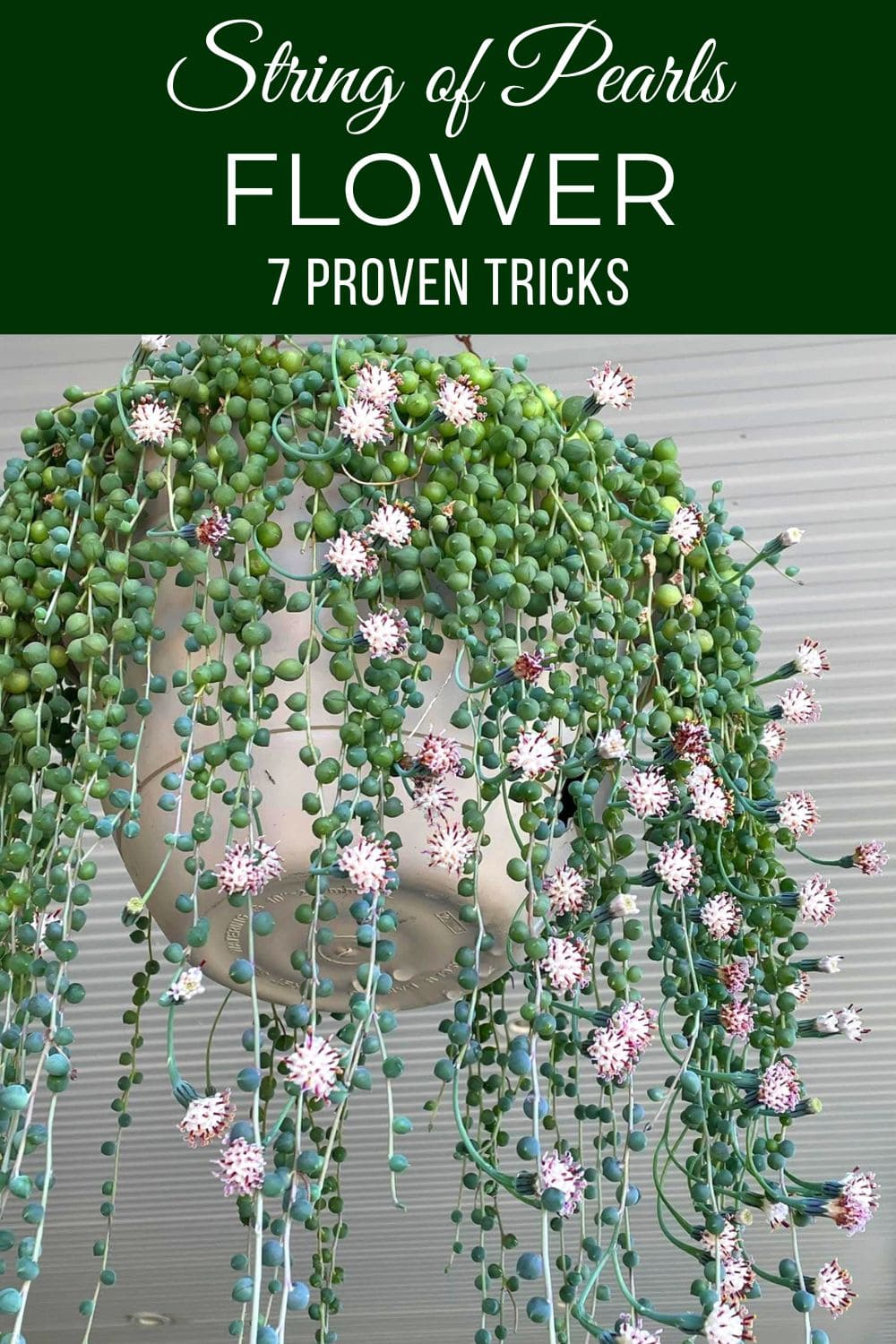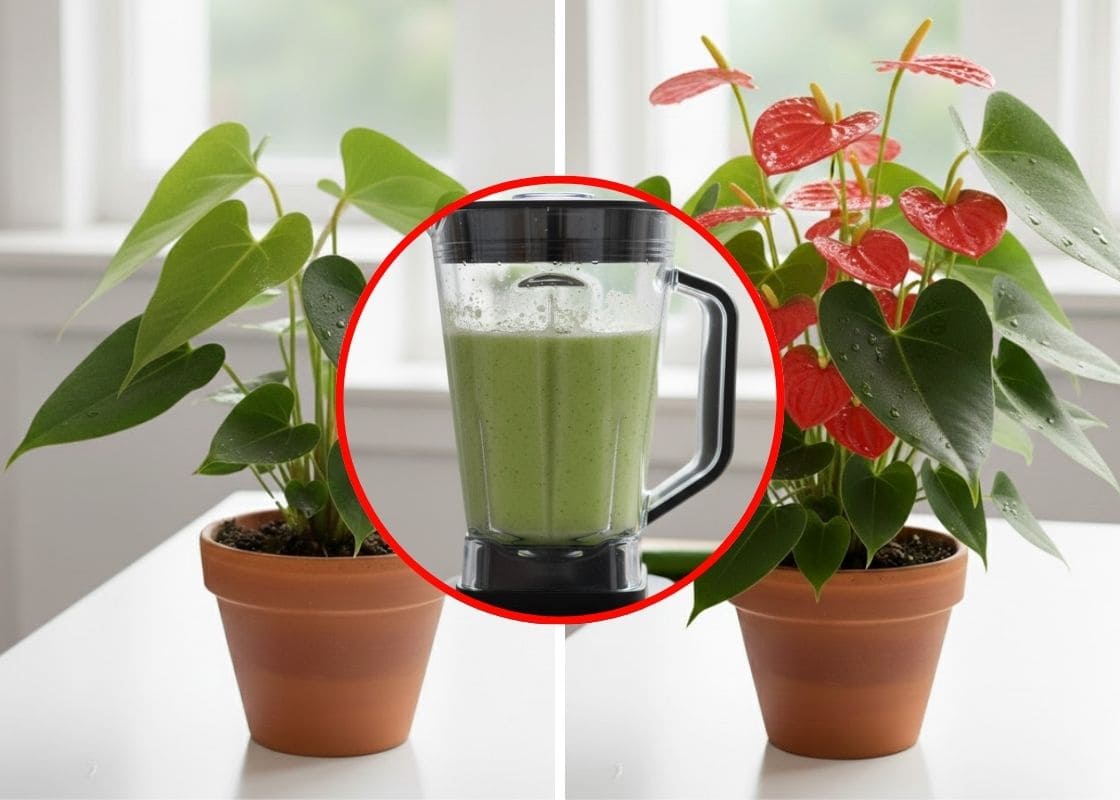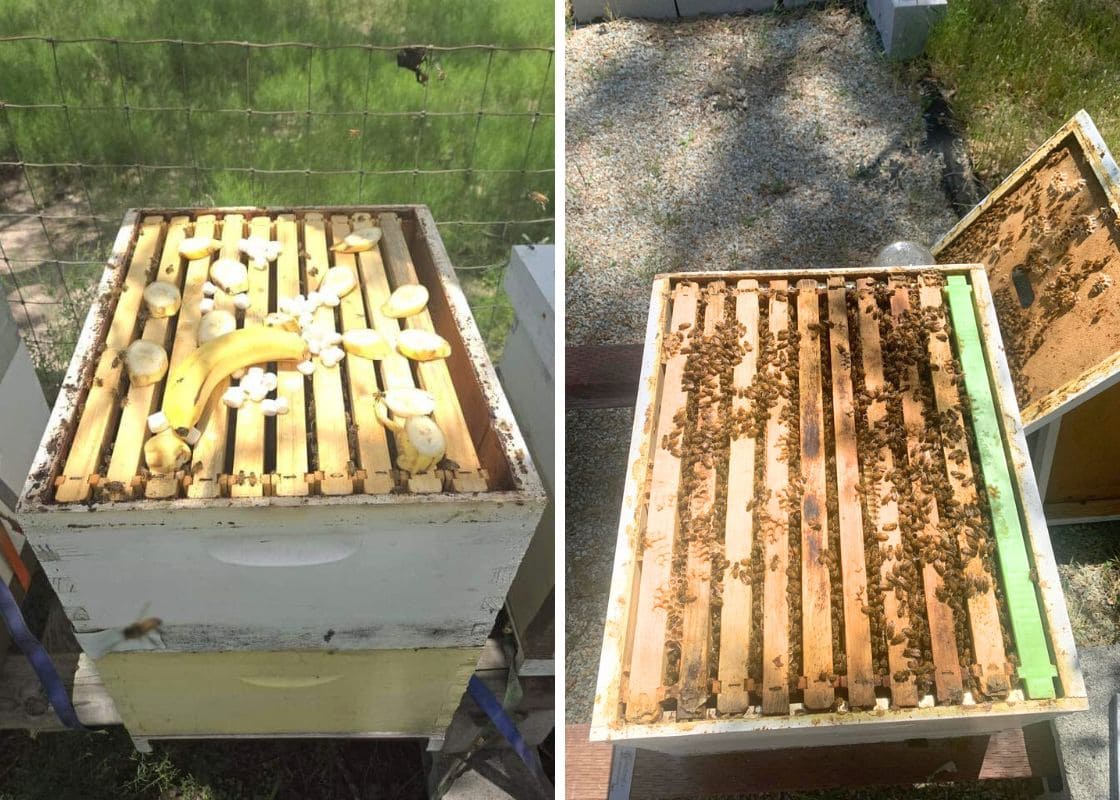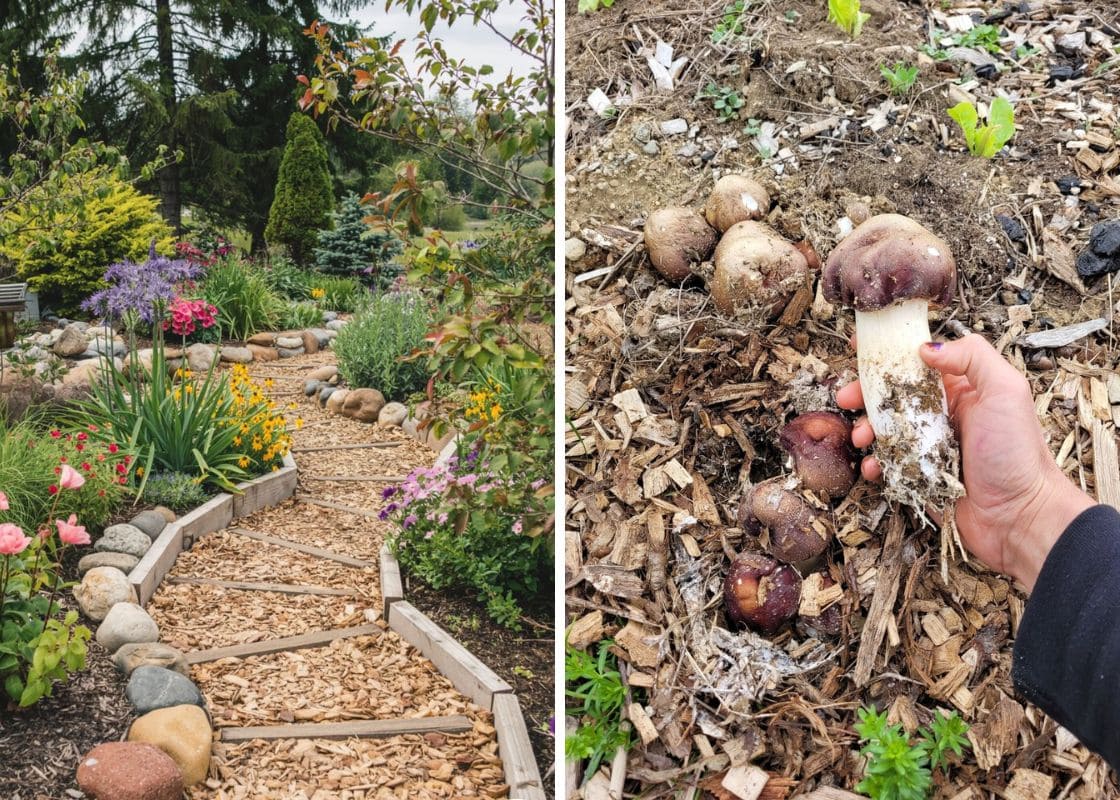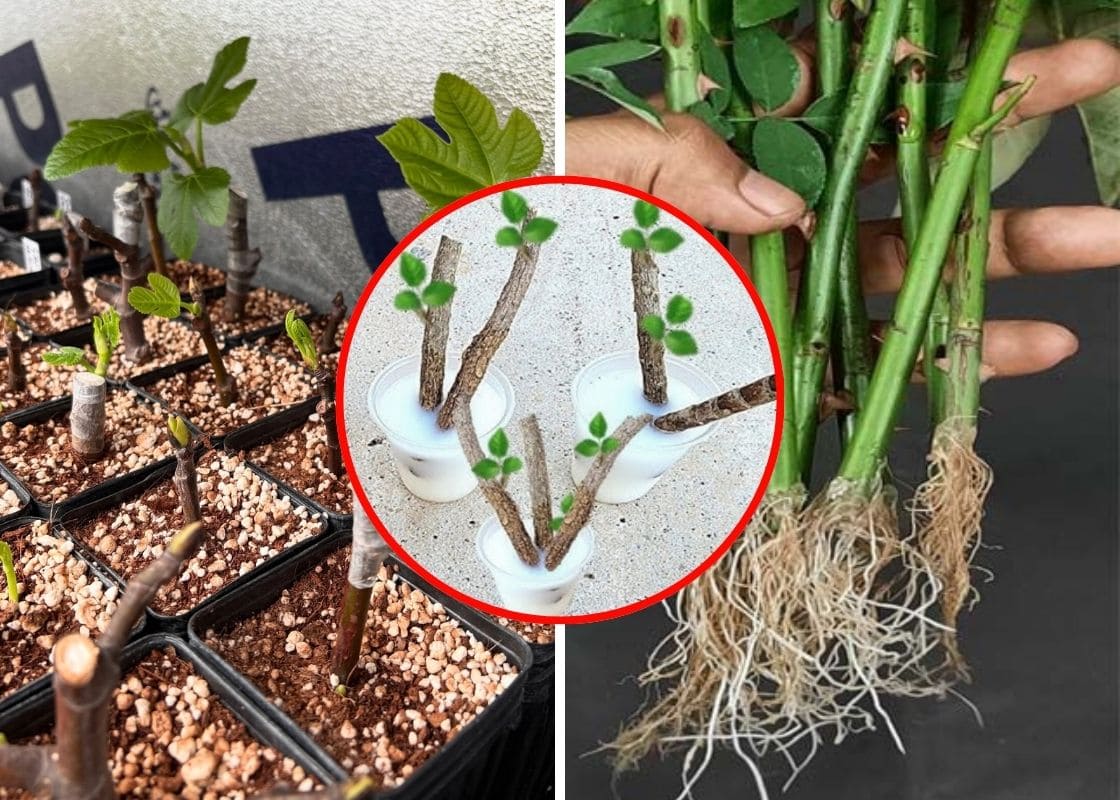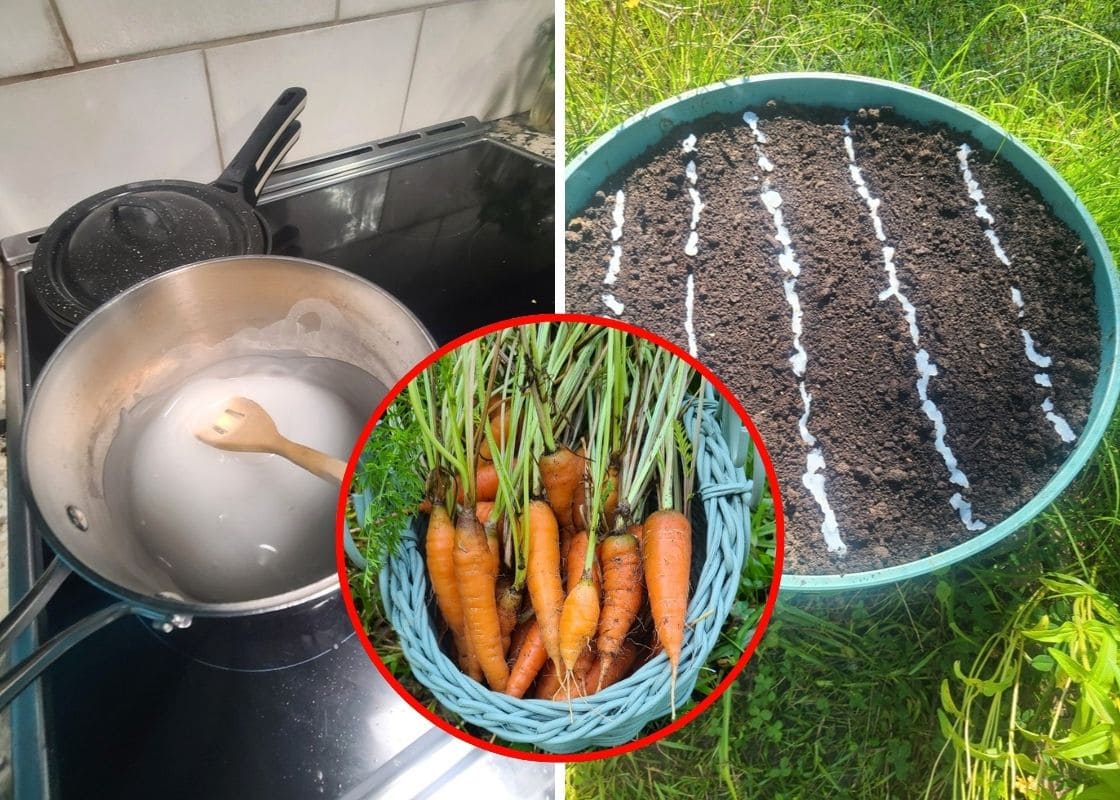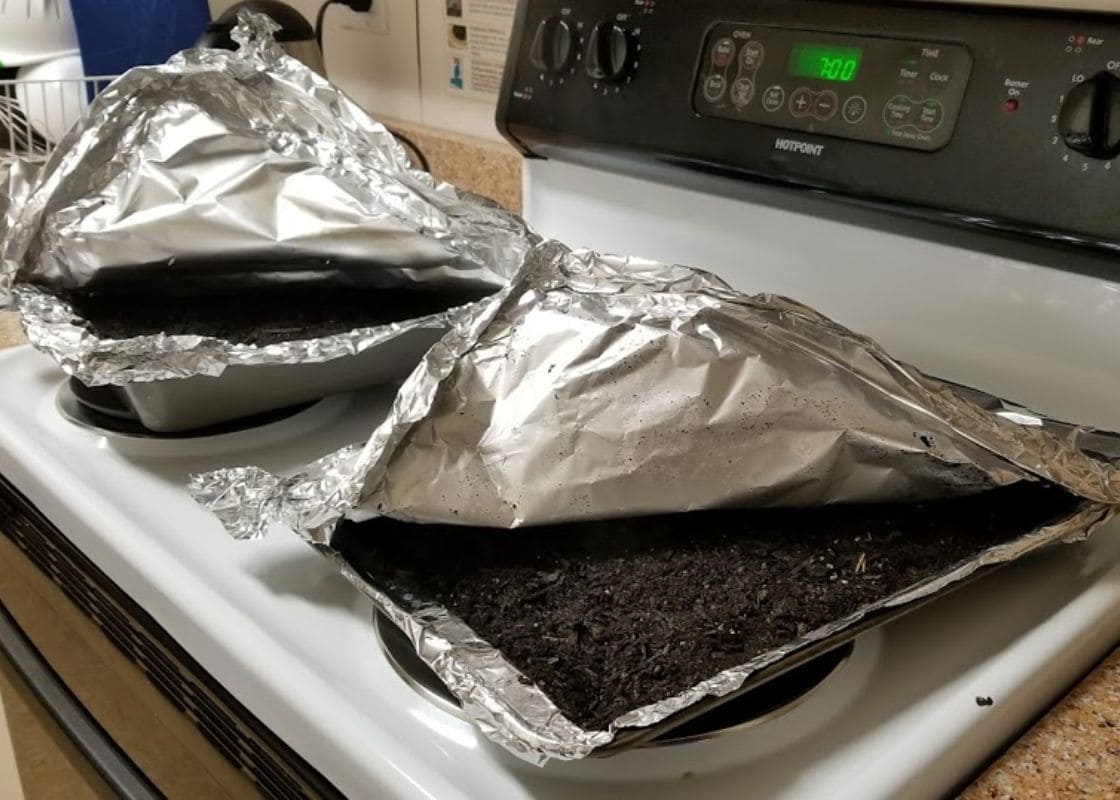The string of pearls (Curio rowleyanus, formerly Senecio rowleyanus) is one of those houseplants that can stop you in your tracks.
Its cascading vines dotted with green beads look like living jewelry.
But what many plant lovers don’t realize is that this succulent can bloom. Even better, the blooms smell faintly of cinnamon and cloves, filling the room with a sweet, spicy fragrance.
The challenge is that indoor-grown String of Pearls don’t flower easily.
With the right care and a little trickery, though, you can encourage this beauty to reward you with blooms.
1. Give Them Generous Sunlight
Flowering takes a lot of energy, and without strong light, your string of pearls will never build the reserves it needs.
Indoors, aim for at least 6-8 hours of bright, indirect sunlight every day.
A south-facing window is best, but an east- or west-facing spot can also work if the plant gets consistent light.
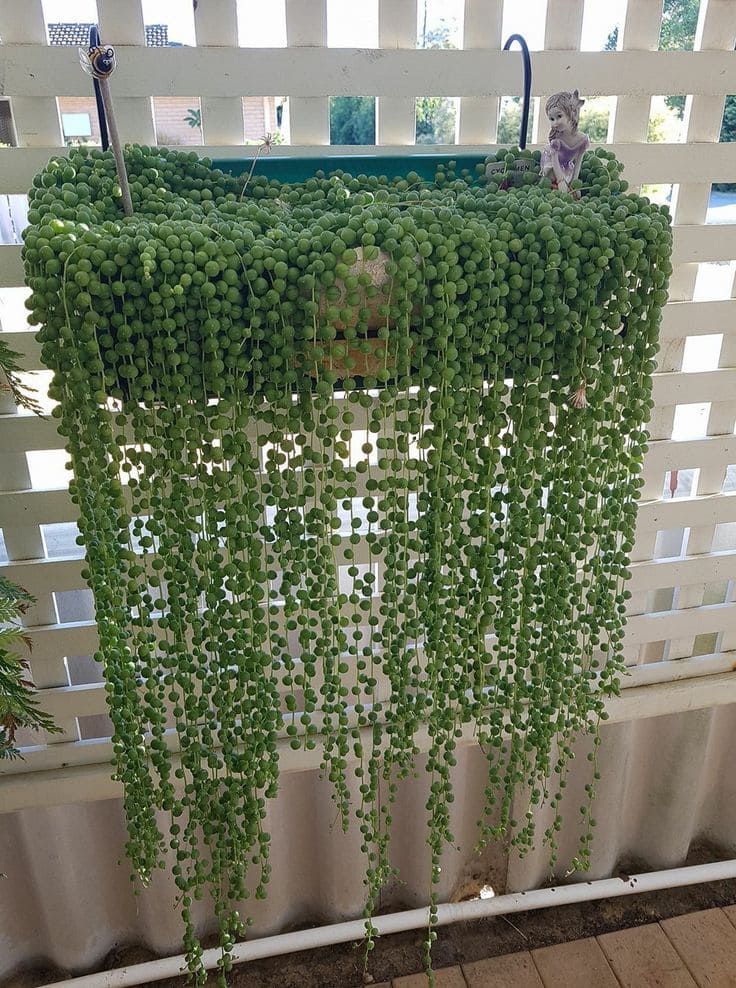
If your home is dim, a full-spectrum grow light can supplement. Place it about 8-12 inches above the plant and run it for 10-12 hours daily.
Additionally, watch for signs like long, stretched-out vines with wide gaps between pearls mean the plant isn’t getting enough light.
Compact, plump pearls signal the lighting is just right.
2. Let Them Get Slightly Root-Bound
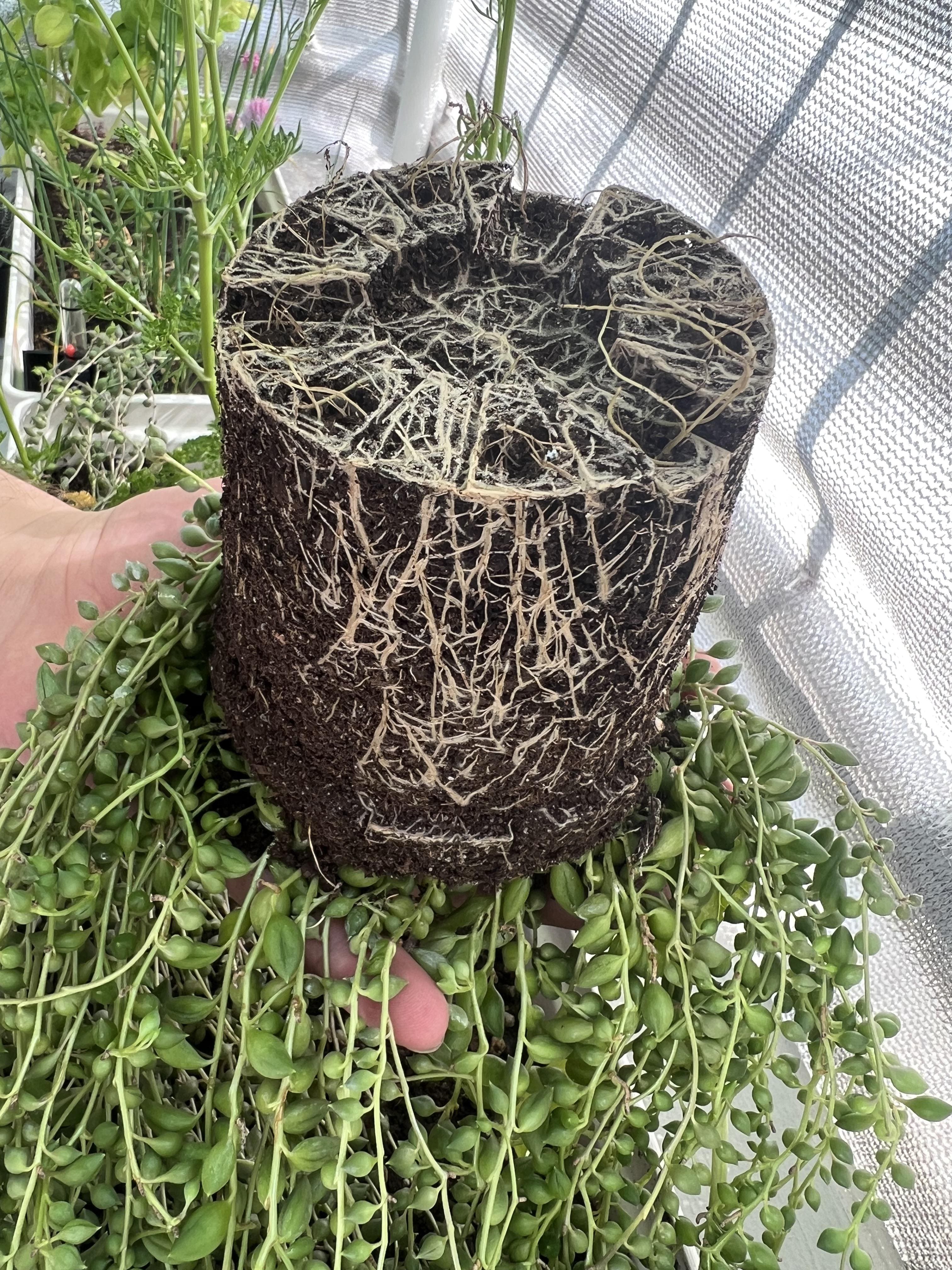
Succulents like string of pearls often flower when they feel slightly crowded.
Being root-bound signals that it may be time to reproduce, and flowers are part of that strategy.
Instead of repotting every year, let your plant grow in the same pot until you see roots circling the bottom or poking out of the drainage holes.
As long as the plant looks healthy, don’t rush to give it more space. A snug pot can actually push it closer to blooming.
3. Mimic Their Natural Winter Rest
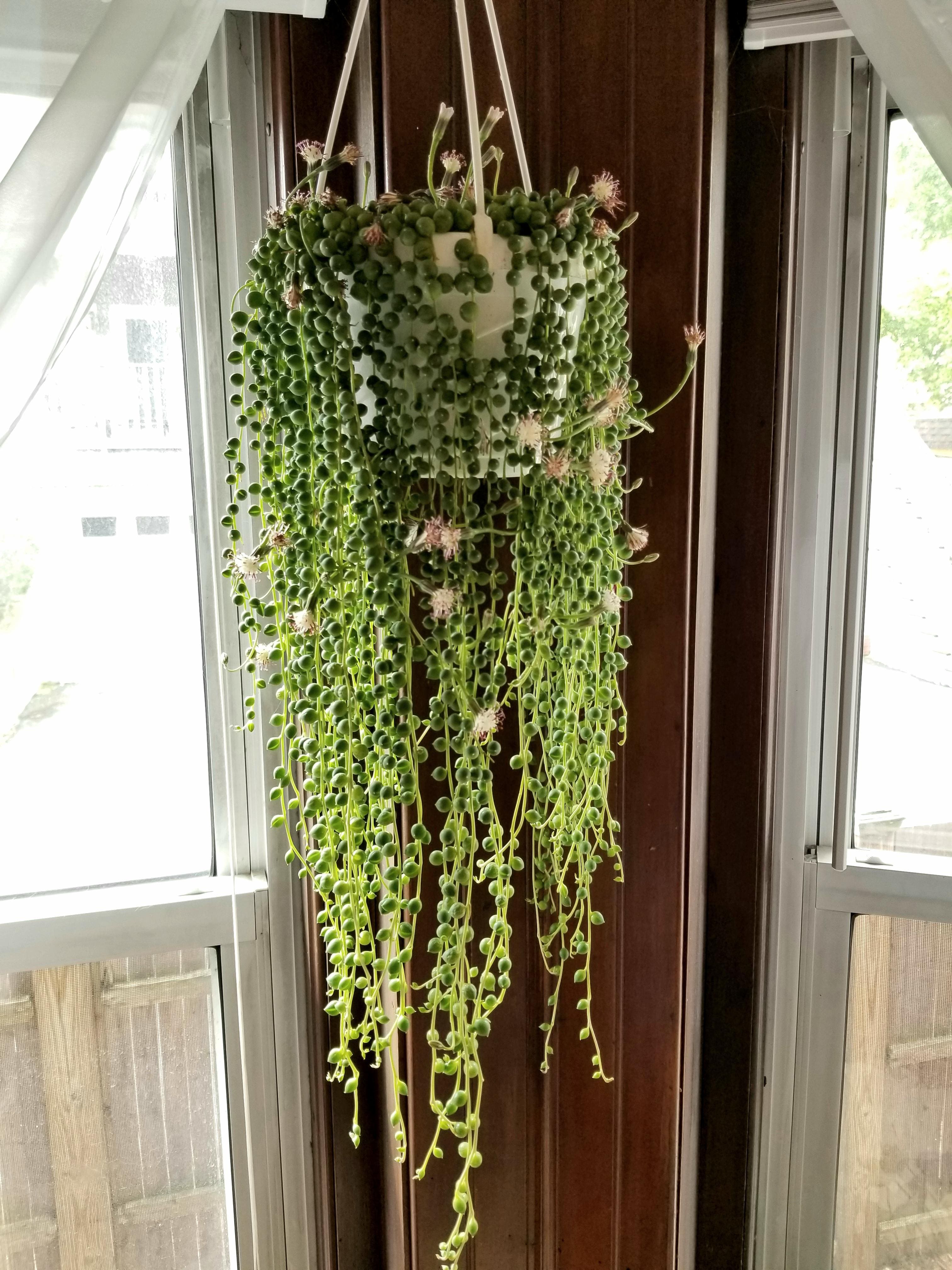
In their native habitat, String of Pearls experience cooler, drier winters before blooming in spring. You can mimic this cycle indoors.
From late fall to early spring, place the plant somewhere where nighttime temperatures drop to 55-60°F (13-15°C).
At the same time, reduce watering so the soil is kept barely moist, not fully dry but not damp either.
This rest period tells the plant to conserve energy and prepare for a flowering push once days get longer and warmer.
Without this cool dormant spell, many indoor plants simply keep producing leaves and vines instead of blooms.
4. Adjust Your Watering Rhythm
Overwatering is one of the easiest ways to stop a string of pearls from blooming.
In their active growing season (spring and summer), water thoroughly when the top 1-2 inches of soil feel dry, then let excess drain completely.
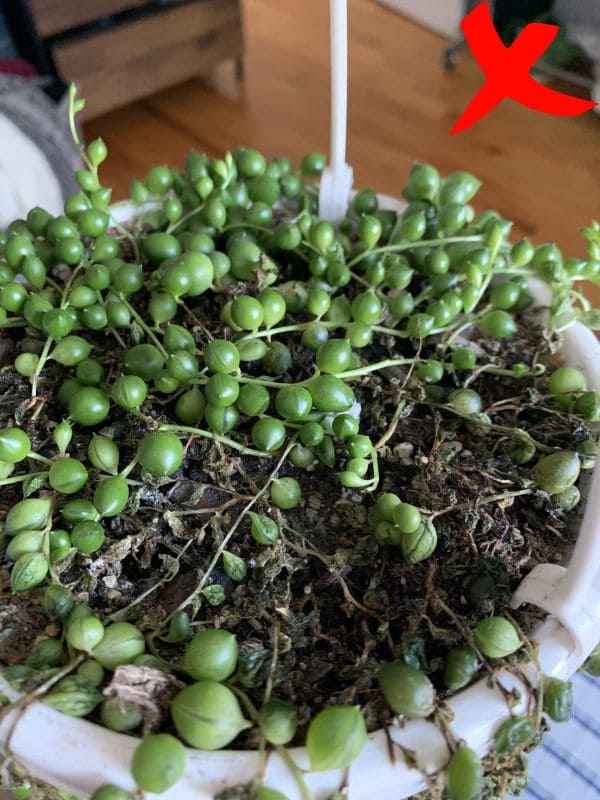
Never let the plant sit in soggy soil, as that can rot the roots. In winter, scale back dramatically, only water once the pearls look slightly less plump or the soil is fully dry.
This seasonal watering rhythm mimics their desert roots and encourages reproductive behavior when conditions improve in spring.
5. Use the Right Fertilizer for Flowers
Nitrogen-heavy fertilizers are great for leafy houseplants, but they won’t do your string of pearls any favors when it comes to flowers.
Instead, use a balanced or bloom-boosting fertilizer with a higher phosphorus ratio, such as 10-15-10 or 5-10-5. Phosphorus helps stimulate flowering.
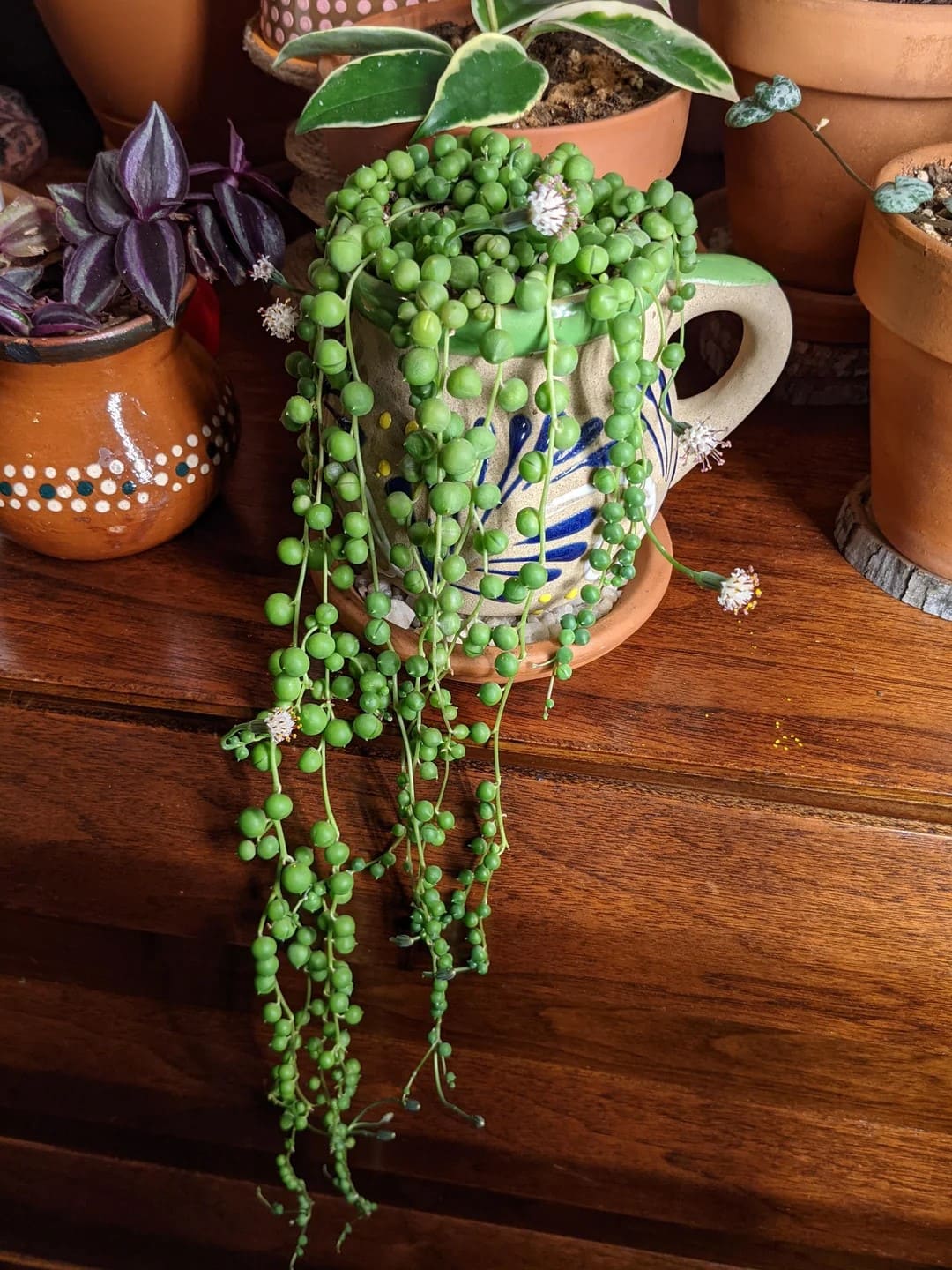
During spring and summer, feed every 4-6 weeks at half the recommended strength as their roots are sensitive and can burn easily.
Always water before applying fertilizer so nutrients don’t shock dry roots.
Also, stop fertilizing in late fall as the plant moves into dormancy.
6. Keep Stress Low, Consistency High
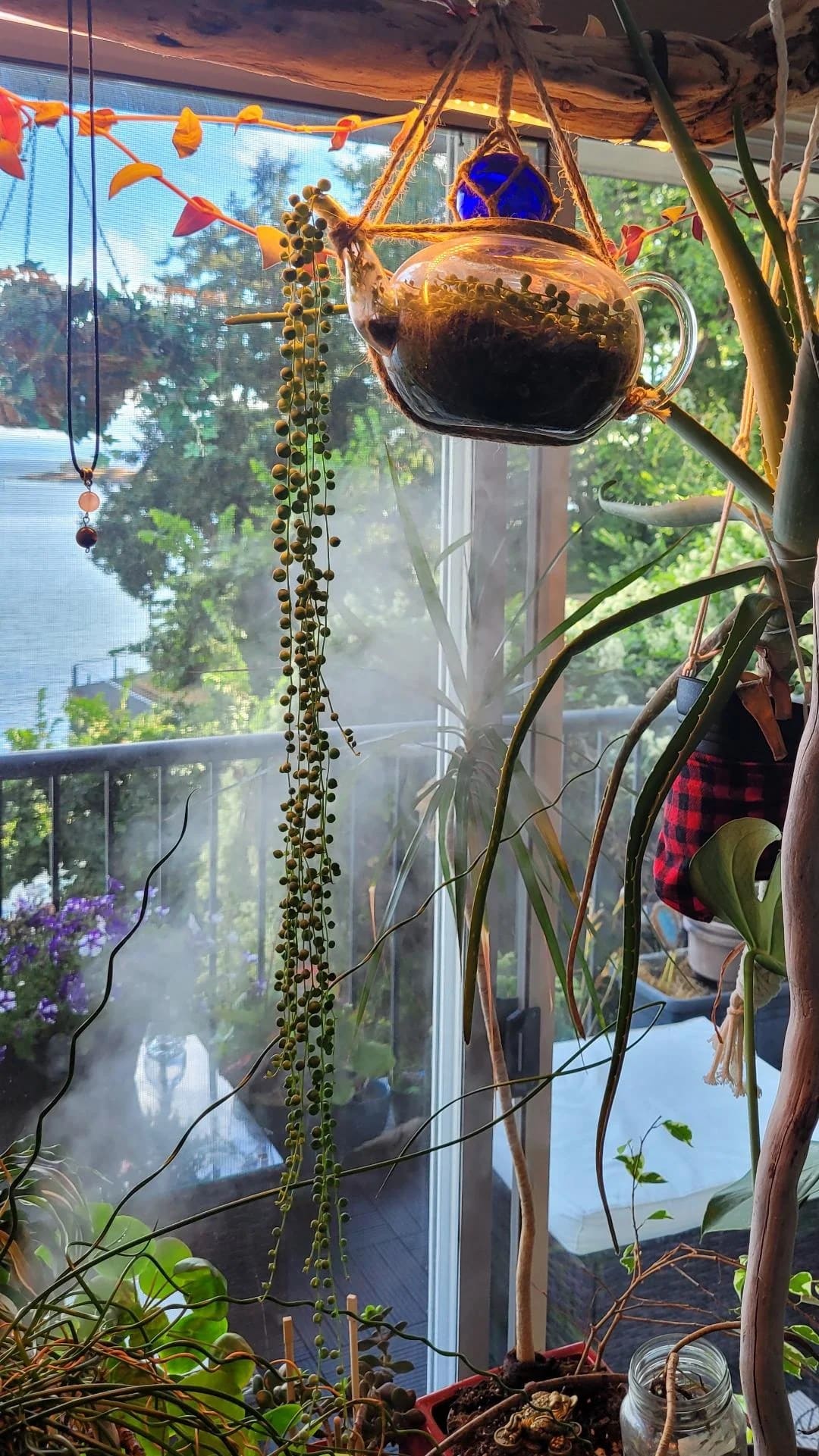
While slight root crowding or cooler temperatures can encourage blooms, too much stress works against you.
Drafty windows, sudden moves, or big swings in watering can cause vines to shrivel.
Try to keep conditions steady like moderate humidity, bright indirect light, and a consistent watering routine.
You also need to avoid shifting the plant around your house once it’s adjusted to a good spot.
7. Give It Time and Patience
Finally, remember that String of Pearls usually won’t flower until they’re mature.
Younger plants under two years old are still building strength and focus more on vine and pearl growth.
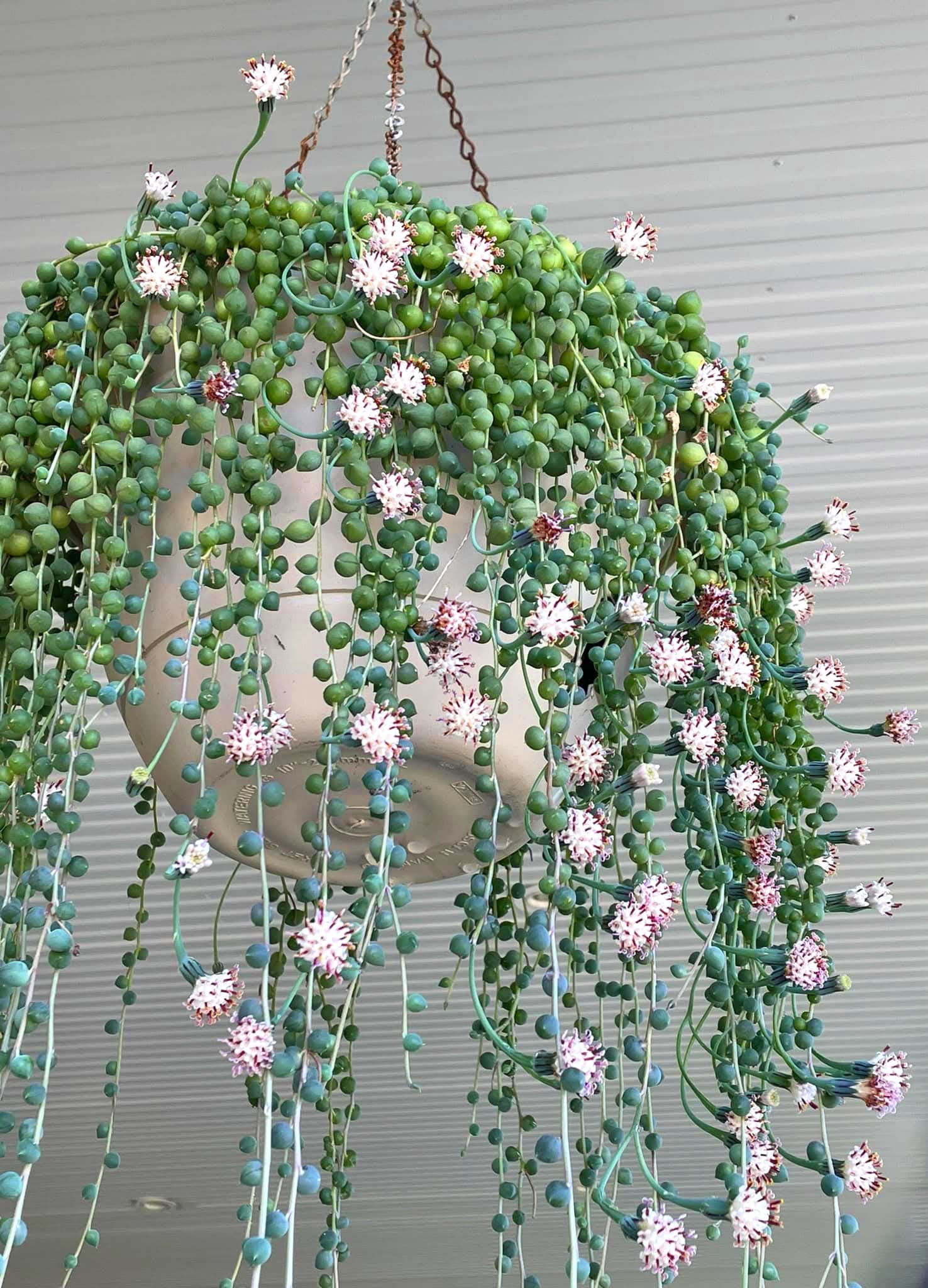
If your plant is still young, focus on giving it perfect care and patience.
A mature plant, with healthy, trailing vines and a strong root system, is far more likely to flower once the right seasonal cues are in place.
The first blooms might take a couple of years, but once you see them and smell that cinnamon fragrance you’ll know the wait was worth it.
Read more: 10 Secrets to Growing Long, Cascading String of Pearls Vines
